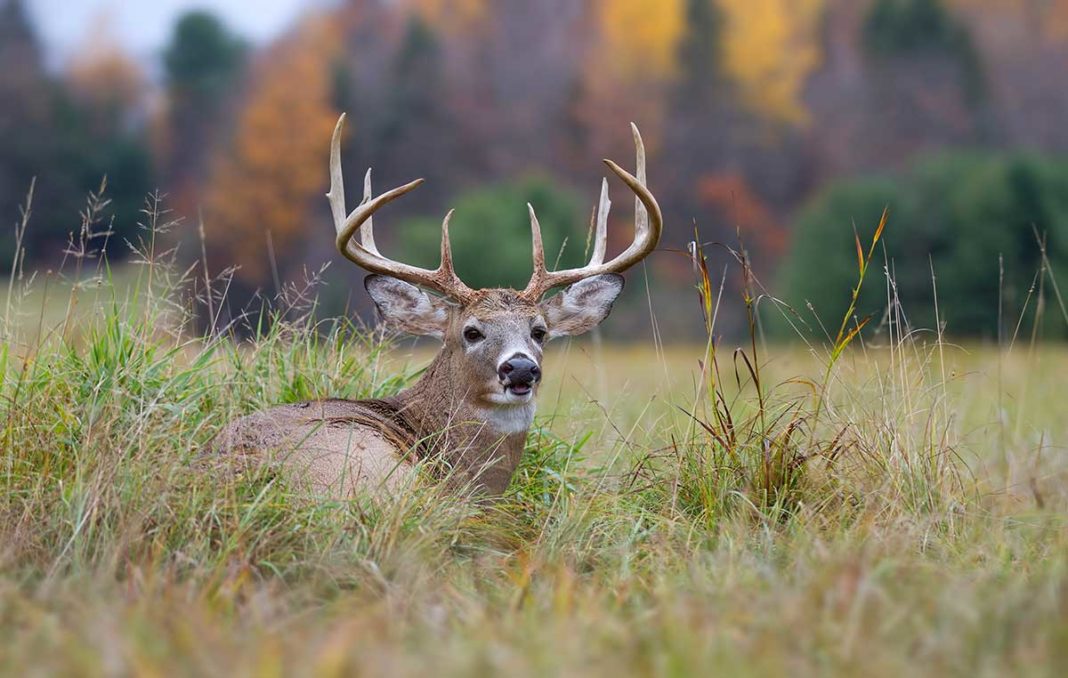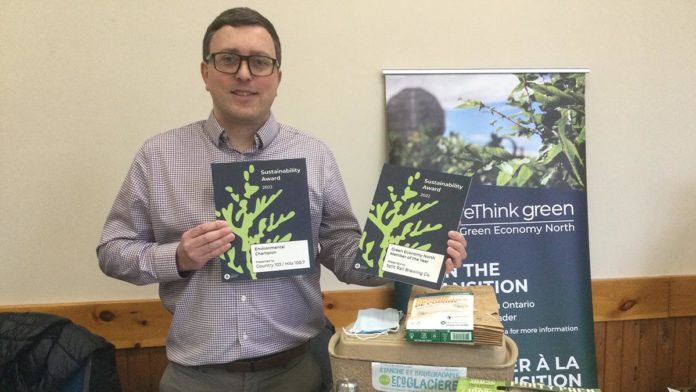MANITOULIN—Data provided by the Ministry of Northern Development Mines Natural Resources and Forestry (MNR) indicates that for the past two hunting seasons on Manitoulin, both successful deer harvesting and deer sightings are lower than ideal. The Manitoulin Deer Management Committee, which includes game and fish, municipal and agricultural representation, supported recommendations to hold the deer tag permit numbers at the same level for 2022, as was in place for the 2021 fall deer hunt.
Wayne Selinger of the MNR told the meeting, “the main indicators of deer population status, including the number of deer seen per day per hunter and the number of deer harvested last fall have not changed much and are well below target. I see no reason to change deer tag numbers for the 2022 hunt. “I think we should wait a year and then react harder (make more tags available) if the deer population increases significantly over the next year.”
“I definitely don’t think we would want to consider a tag increase for wildlife management unit WMU 43A on the West End of Manitoulin,” said Mr. Selinger. “The population remains low and stable, at best, as is the case for many units around Manitoulin Island including the North Shore, south and east of Sudbury and St. Joseph’s Island. Status quo may end up being the tool of choice for many of the (WMU) units in this part of the province.”
Roy Polsky, chair of the Ontario Federation of Anglers and Hunters (OFAH) Zone D (which includes Manitoulin Island) said, “I support your recommendation for leaving things status quo, even though I haven’t received a doe tag for the past two years.”
“The Little Current Fish and Game Club (LCFGC) is in favour of leaving the deer tag quota as is,” said Kevin Hutchinson.
“I’m fine with that as well,” said Lee Hayden, reeve of Gordon/Barrie Island. Several other representatives expressed the same thought.
In providing background on the data collected, Mr. Selinger said, “for the number of deer seen per hunter per day, we saw populations increase to a peak in 2017, so we took action in 2018 and provided 1,000 additional deer tags before the 2018 hunt. Then we had a nasty winter in 2019 that was severe on deer. Surprisingly, the deer population hasn’t gone up much since, despite three mild winters.”
“Based on mandatory reporting data for the 2021 hunt, an estimated 211 deer were harvested in WMU 43A (West End of Manitoulin) and 2,327 deer were harvested in WMU 43B (Central and East End of Manitoulin) last fall,” said Mr. Selinger. “As far as other key population indicators go, hunters saw 0.67 deer per hunter day in WMU 43A and 0.97 deer per hunter day in WMU 43B. Hunter success (any deer harvested) was 21 percent for WMU 43A and 37 percent for WMU 43B.”
Mr. Selinger noted that harvest, hunter success and deer seen per hunter have remained relatively stable, as compared to the 2019 and 2020 hunts.
“Deer numbers on Manitoulin remain below average and below target for both WMUs,” said Mr. Selinger. “The winter of 2019 was extremely severe, resulting in significant winter mortality and a very poor fawn crop. The impact of winter 2019 continues to be a factor and deer populations have been slow to recover.”
He pointed out there are always deer hot spots on Manitoulin with higher-than-average density, such as Gore Bay and Gordon/Barrie Island township.
“As far as the number of coyote and predators seen per hunter, we saw a significant peak in 2019 as a normal response to the benefit of widespread deer mortality, but their numbers have since declined and appear to be more in line with longer term trends for the Island.”
In WMU 43A last year, the deer tag allocation was set at 300. A total of 716 applications were made, with 300 provided so 42 percent of hunters received tags. “Hunter demand has decreased over time and we have seen long-term habitat-related population declines,” said Mr. Selinger. He noted deer tags were decreased from 500 to 300 for the 2019-2021 hunts. “For 43A, our goal should still be to try and increase the deer population.”
“In 43B the tag allocations were down as low as 2,500 in 2014,” said Mr. Selinger. “The tags were gradually increased after 2014, and then maxed out at 6,000 in 2018 with 1,000 additional tags provided in agricultural areas but after the severe winter of 2019, tag numbers were reduced again and have been at 4,000 since. In 2021, 5,882 hunters applied, so 68 percent of hunters received tags.”
“Deer management is as much art as science,” stated Mr. Selinger. “We all acknowledge that the hunt provides social and economic benefits but with more deer, there is more damage to agriculture crops and more motor vehicle accidents involving deer.”
“My recommendations, based on data, is that we should stay the course, there is no reason to change the current management direction,” said Mr. Selinger.
“Personally, I absolutely support your recommendations,” stated Ian Anderson, a member of the Gore Bay Fish and Game Club (GBFGC). “The decision should be based on the data. If we see a dramatic increase in the deer population, we can solve this next year (with an increase in deer tags).”
“So the dilemma for all advisors on the committee is that it would have been good to have had all this information in advance of the meeting,” said Mr. Anderson. “All of us here today on the call are representing someone, a group or organization. But to me, everything that you have said makes perfect sense. However, the Gore Bay Fish and Game Club (GBFGC) didn’t have all this information when they made their recommendation (to increase the number of tags available in both WMUs by 25 percent).”
“We had a very late start to the winter, with late January before any substantial snow depths were found on the Island,” said Mr. Anderson. While it was very cold in February and March the snow depths were mild.
“The green-up will be late, another week or so,” said Mr. Anderson, “and without question predator numbers have declined.” As a trapper, three years ago he trapped 73 animals, with this decreasing to 55 last year and this year dipping again to 40.
Mr. Hutchinson said that deer numbers in Sandfield have increased as well as in other areas he traps on the Island. “It appears the deer population is on the rebound.” He said the LCFGC felt overall, they would be in favour of a slight increase in the number of antlerless tags somewhat, maybe 10-15 percent, but 25 percent would be too much. He also said they did not seem to be opposed to leaving the tags the same for another year.
“I represent Gordon/Barrie Island and own 1,000 acres of property with my dad,” said Mr. Hayden. “The deer I’ve seen this winter and spring seem very healthy. I think we could be looking at a significant increase in deer population in the future. As far as numbers if we leave the tag numbers the same, we will have to keep an extremely close watch on the population.”
“I have no problems with leaving the tags the same,” said Mr. Polsky. “I have even heard guys say that the tag numbers should be decreased. They don’t want to see an increase in the tags in case we have a bad upcoming winter.
“When the deer populations get out of control we provide extra seals. Both times we have needed to put this in place it has worked, but unfortunately in both cases, right after that we had very tough winters,” said Mr. Selinger. “The deer population has not rebounded since the winter of 2019, nowhere close,” reiterating that although the recommendation is to keep the tag numbers status quo for this year’s hunt in both WMUs, the group could look at recommending an increase next year if there is a deer population increase.
Mr. Selinger told The Expositor, “We heard from the Manitoulin deer advisory committee and will take those opinions into consideration moving forward with this year’s quota. The ministry will work closely with the big game management advisory committee that will also offer recommendations to the ministry. The ministry will make final decisions on deer quotas throughout the province in May.”





